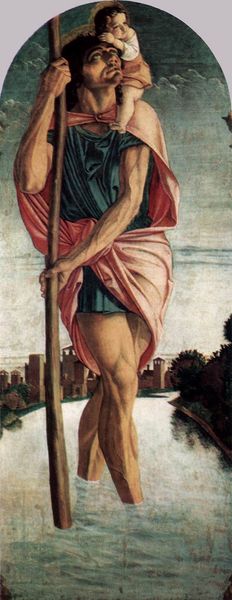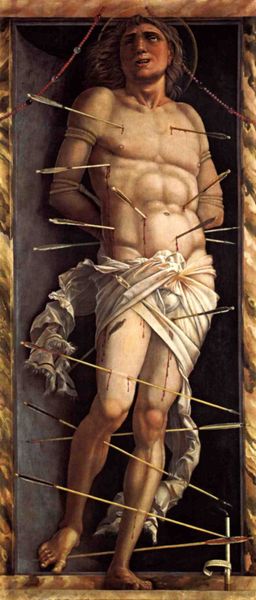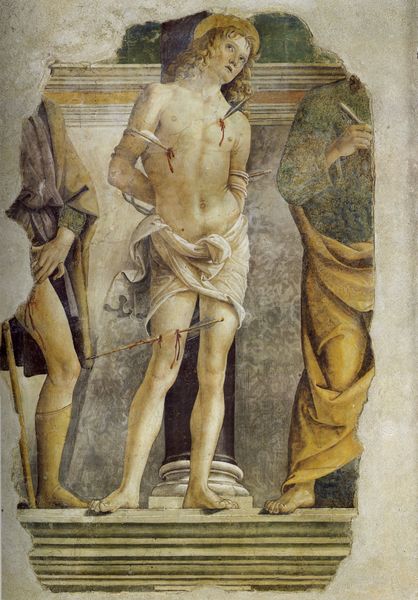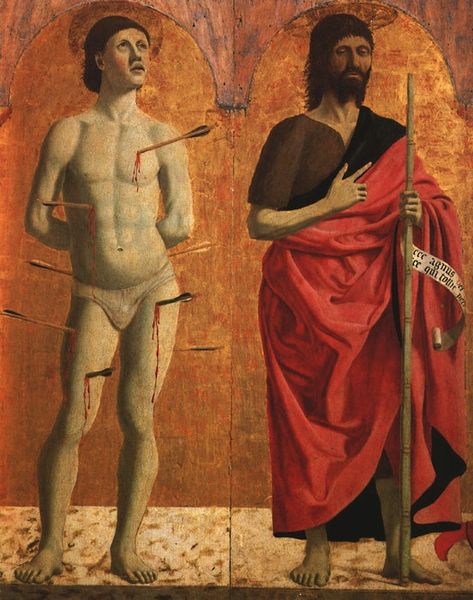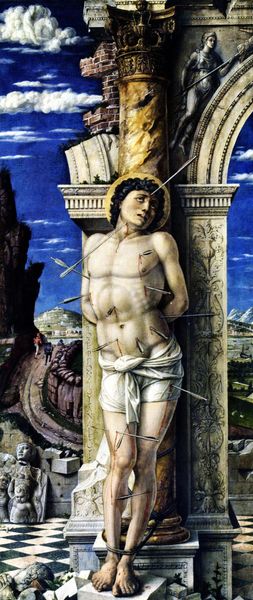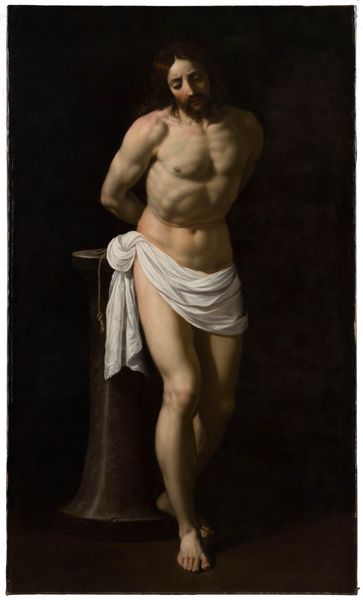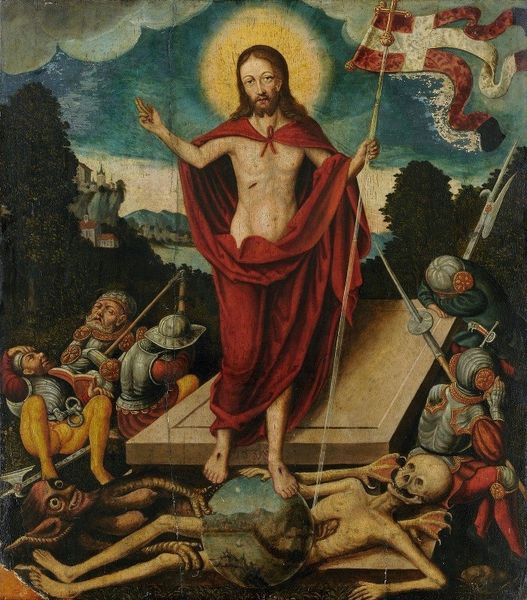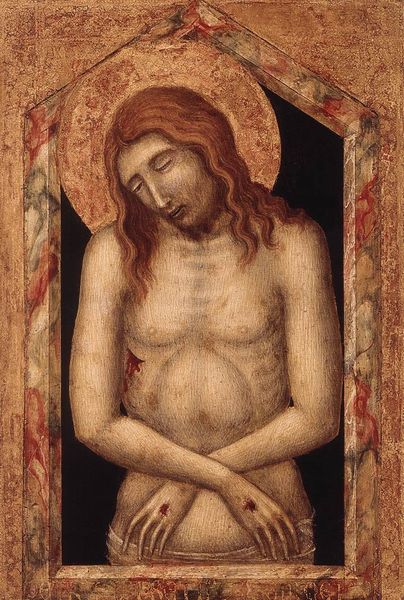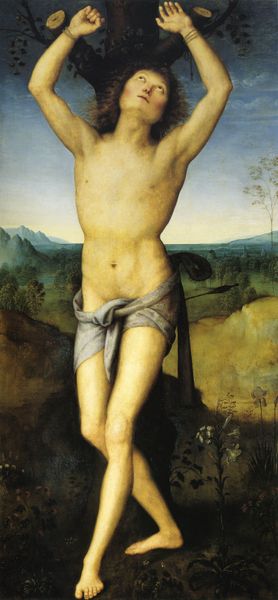
painting, oil-paint
#
painting
#
oil-paint
#
figuration
#
oil painting
#
history-painting
#
italian-renaissance
Copyright: Public domain
Editor: We’re looking at Ambrogio Bergognone’s "Christ Rising from the Tomb," painted around 1490, in oil. It strikes me as both serene and powerful, especially Christ’s gaze. What do you see in this piece, particularly when considering its Italian Renaissance context? Curator: I see a fascinating negotiation between the divine subject and the material realities of its creation. Notice the almost tactile quality of the drapery – how Bergognone uses oil paint to create folds and textures that invite a physical interaction, even though we know this is meant to depict a spiritual event. It begs the question: how does the artist's choice of materials and techniques reinforce or perhaps even subtly subvert the religious message? Editor: That’s interesting. The drapery *is* so detailed; you almost forget it’s oil on panel. Does the material quality have any socio-economic implications here? Curator: Absolutely. The use of oil paint, relatively new at the time, speaks to a patron who could afford such a costly material. Furthermore, the level of detail suggests significant time and labor investment. We must ask: who was Bergognone painting for, and what did *they* want to convey through this opulent display of skill and material wealth? Consider, too, the skilled labor of preparing pigments, the craft of the panel maker – all these contribute to the final “spiritual” product. Editor: So, it's not just about divine representation, but also about earthly production and consumption. It sounds like even religious art served specific class interests? Curator: Precisely! We shouldn't divorce the artwork from its conditions of production. Even a depiction of the resurrected Christ is fundamentally tied to the earthly realms of material, labor, and social power. It’s fascinating, really. Editor: It changes how I see the piece. I was focused on the religious meaning, but now I'm also considering who paid for the materials and labor. Thanks for sharing your insight. Curator: And thank you for helping me see how traditional interpretations sometimes overlook the socio-economic dimensions of art.
Comments
No comments
Be the first to comment and join the conversation on the ultimate creative platform.
